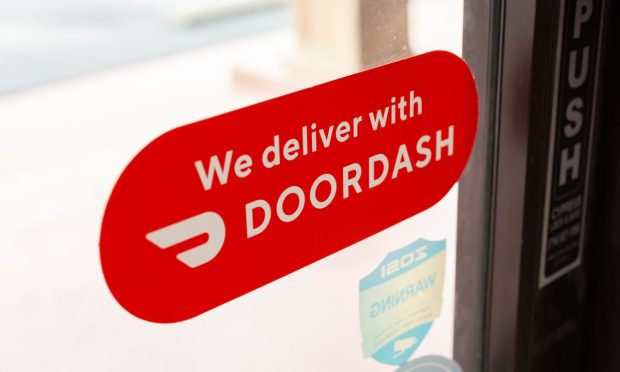DoorDash and Chase Count on Convenience to Drive Rewards Card Spend

DoorDash has launched a co-branded credit card as aggregators work hard to gain ground.
The San-Francisco-based company Wednesday (March 1) launched its DoorDash Rewards Mastercard, created in partnership with Chase, offering 4% cash back on orders placed via the aggregator or its subsidiary Caviar in an effort to incentivize more frequent, higher-ticket purchases.
“We are thrilled to introduce the DoorDash Rewards Mastercard to give consumers more convenience and value on their everyday purchases from their favorite businesses,” Usman Cheema, senior director of global partnerships at DoorDash, said in a statement. “Together with longstanding partners Chase and Mastercard, we are delighted to offer rewards and cash back opportunities for cardmembers to support their neighborhood businesses.”
The launch comes months after the partnership was initially announced in September.
“The new DoorDash Rewards Mastercard is created to connect people to their communities through digital solutions, simple payment experiences and on-demand access,” said Sherri Haymond, executive vice president, global digital partnerships at Mastercard.
In addition to the cash back deal, DoorDash is also offering cardholders a free year of its DashPass delivery subscription, a program which, as COO Prabir Adarkar recently stated, the aggregator aims to make as popular as Netflix or Amazon Prime. In this way, the partnership seems to take inspiration from competitor Grubhub’s move to offer free one-year subscriptions to Bank of America cardholders, driving adoption of the program and reaching new customers.
With moves such as these, aggregators are seeking to get creative in their attempts to grow their share of total restaurant orders. After all, third parties are losing out to other popular channels, according to data from PYMNTS’ study “The 2022 Restaurant Digital Divide: Food Aggregators Find Their Footing,” which draws from a survey of more than 2,200 U.S. consumers about how they engage with restaurants.
The findings revealed that 20% of respondents reported that they had made their most recent restaurant purchase via digital channels, but only 2.5% had done so via aggregator. In contrast, 78% had done so via paying an employee in person and 10% had done so digitally via restaurants’ direct ordering channels. Consequently, direct ordering outpaces aggregator 4-to-1.
To a certain extent, leading aggregators are taking a “if you can’t beat ’em, join ’em” approach, focusing on expanding their offerings outside of third-party ordering. For instance, exactly a year ago, DoorDash announced the acquisition of Bbot to offer in-store payment solutions for restaurants, and last month, Grubhub shared updates to its Grubhub Direct white-label platform, which enables restaurants to build their own branded eCommerce sites.
In a recent interview with PYMNTS, Kate Green, vice president, restaurant services and innovation at Grubhub, maintained that third-party channels and direct ordering are not in competition.
“What we’ve seen, too, is that diners are going to make their choice based on where they’re going to want to order, and it’s our job to be able to create the best experiences for those diners and for our restaurant partners, whether that’s on a direct channel or whether that’s on marketplace,” Green said. “So we see them really as more complementary than [as] competing channels.”

